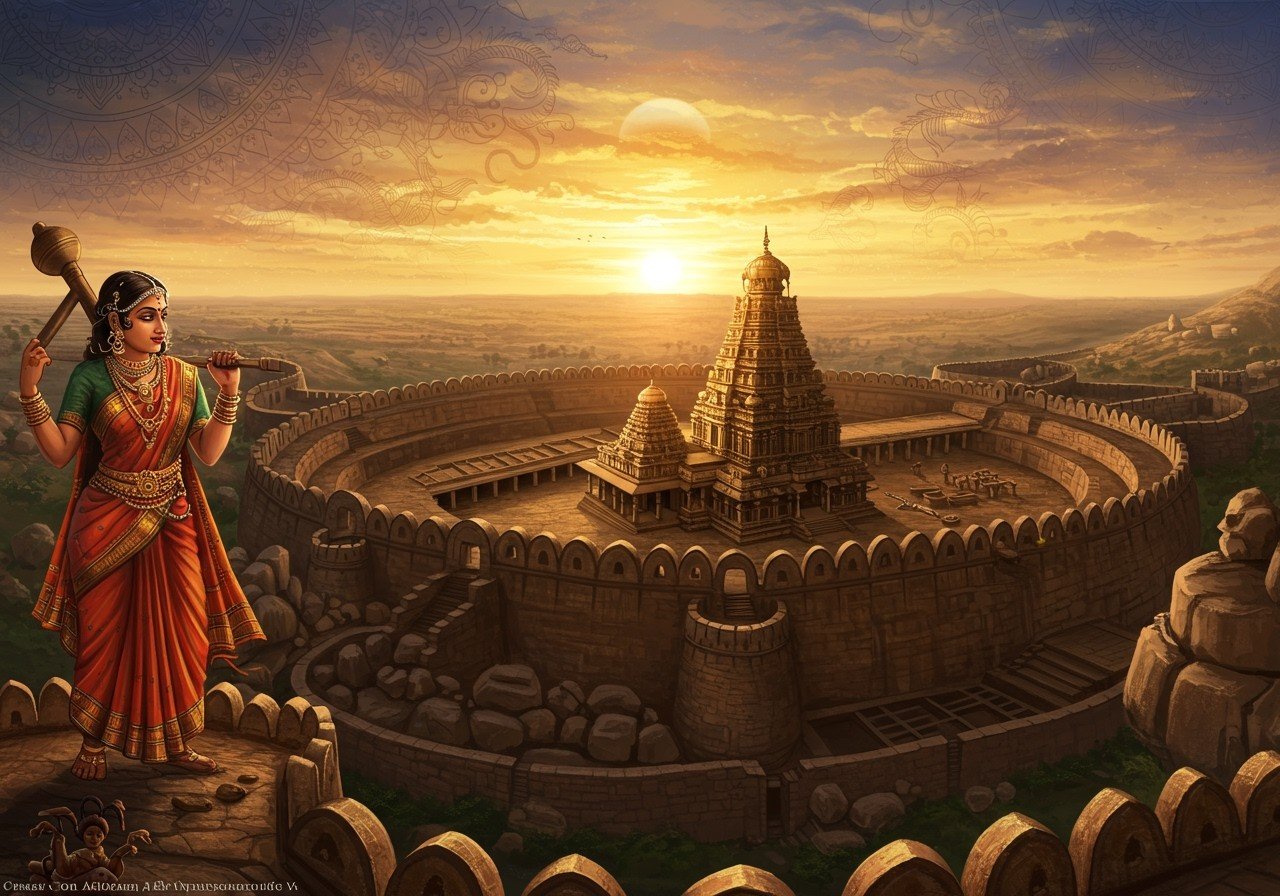
Nestled in the heart of Karnataka, India, the Chitradurga Fort stands as a testament to a glorious past, echoing tales of bravery, architectural brilliance, and spiritual significance. Known as Chitrakaldurga, meaning ‘picturesque fort’ in Kannada, this historical marvel sprawls across numerous hills and a prominent peak, captivating visitors with its grandeur and intricate design.
Strategic Importance and Historical Context
Chitradurga Fort’s strategic location played a pivotal role in shaping the region’s history. Construction commenced under the Chalukyas and Hoysalas between the 7th and 12th centuries, and later saw expansions during the Vijayanagar Empire by the Nayakas of Chitradurga from the 15th to the 18th centuries. Its elevated position provided a natural defense advantage, proving crucial during conflicts, notably against Hyder Ali in 1779 and subsequently the British forces after Tipu Sultan’s defeat.
- Seven Concentric Walls: These formidable fortifications, built over centuries by different rulers, made the fort virtually impregnable, with each wall adding another layer of protection against invaders.
- Natural Rock Formations: The fort’s ingenious builders incorporated the natural rocky terrain into its defense strategy, creating a formidable barrier against enemy advances.
- Geographical Advantages: The surrounding rocky hills and valleys provided additional layers of defense, making it extremely challenging for enemies to approach undetected. It also offered excellent surveillance points.
- Influence on Trade Routes: The fort’s commanding position allowed it to control major trade routes, influencing the region’s political dynamics and economic prosperity.
Hidden Passages and Ingenious Defense Mechanisms
Chitradurga Fort is renowned for its intricate network of secret passages and ingenious defense mechanisms, testaments to the architectural brilliance of its builders.
- Underground Tunnels: A network of secret tunnels facilitated stealth movement of troops, enabling surprise attacks and providing escape routes during sieges.
- Watchtowers (2000+): Over two thousand watchtowers offered panoramic views of the surrounding landscape, enabling vigilant surveillance and early detection of approaching enemies.
- Water Management Systems: Sophisticated water management systems, including rainwater harvesting and concealed reservoirs, ensured a continuous water supply during prolonged sieges.
- Camouflaged Entrances: Cleverly camouflaged entrances confused and disoriented attackers, giving the defenders a crucial advantage.
- Ingenious Traps: Strategically placed traps, designed to ensnare invaders, further strengthened the fort’s defenses.
- Distinct Gateways (19): Each of the nineteen gateways boasted unique architectural features and defensive elements, adding to the fort’s impregnability and aesthetic appeal.
A Symbol of Resilience and Spiritual Devotion
Chitradurga Fort embodies not only military strength but also spiritual significance, housing 18 temples within its walls. The fort’s resilience is epitomized by the legendary Onake Obavva, a woman who single-handedly defended a crucial entry point using a simple onake (pestle) against Hyder Ali’s forces.
- Onake Obavva’s Legend: The courageous tale of Onake Obavva, who single-handedly defended the fort against Hyder Ali’s soldiers, has become a symbol of extraordinary bravery and resourcefulness.
- Ancient Temples (18): The presence of eighteen temples within the fort, including the Hidimbeshwara Temple dedicated to Hidimbi (wife of Bhima from the Mahabharata), underscores its spiritual significance.
- Nayaka Rulers and Cultural Heritage: The Nayaka rulers played a crucial role in preserving the fort’s spiritual and cultural heritage, patronizing temple construction and religious practices.
- Annual Festivals: The fort continues to be a center of spiritual activity, hosting annual festivals that reinforce its cultural and religious significance.
Architectural Marvels
Chitradurga Fort’s architectural features showcase a harmonious blend of functionality and aesthetics.
- Integration with Natural Landscape: The fort’s design seamlessly integrates the natural rocky outcrops and boulders, showcasing the builders’ ingenuity in utilizing the terrain to their advantage.
- Impressive Gateways: The gateways, including the renowned Rangayyana Bagilu, are adorned with intricate carvings and sculptures, reflecting the artistic skills of the era.
- Granaries: Well-designed granaries within the fort played a crucial role in storing provisions, ensuring the fort’s self-sufficiency during sieges.
- Ancient Inscriptions and Carvings: These historical remnants offer valuable insights into the fort’s history, cultural practices, and the reign of different rulers.
Poojn.in: Connecting You to India’s Spiritual Heritage
At Poojn.in, we understand the deep-rooted connection between spirituality and heritage sites like Chitradurga Fort. We offer a wide selection of authentic puja items to enhance your spiritual practices:
- For Temple Visits: Enhance your temple visits with pure copper kalash sets, traditional cotton vastras, authentic kumkum and chandanam, and brass deepas for aarti.
- For Home Shrines: Create a sacred space at home with complete puja thali sets, pure silver coins, handcrafted brass bells, and traditional agarbatti and dhoop.
Visit Poojn.in today to explore our complete collection.
Conclusion
Chitradurga Fort beckons you to delve into its captivating history, marvel at its ingenuity, and experience the spiritual aura that permeates its ancient walls. A visit to this magnificent fort is a journey through time, an encounter with legends, and a tribute to the enduring legacy of valor and devotion.
Further explore related topics:
- Parshuram Kund Mela: Faith, Tradition, and History
- Parshuram Kund: Mythology, Legends, and History
- Deopani Durga Mandir: Your Complete Guide
- Mahabhairav Temple, Tezpur: History, Significance, Rituals, & Legends
- Burha Madhab Than: Sacred History and Significance Explored


